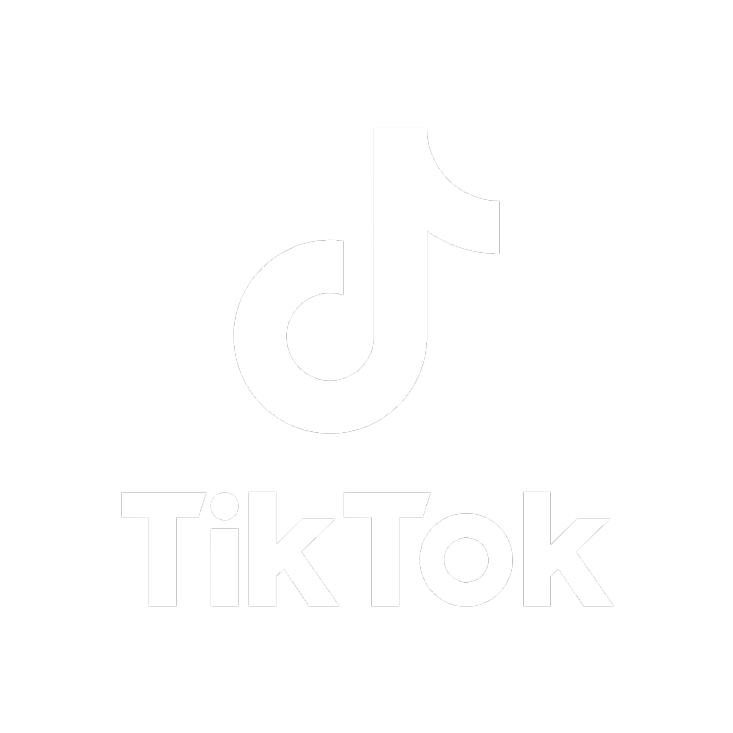Why modern social media managers rely on the right tools
The social landscape has never been more complex. Between shifting algorithms, AI-generated trends, and new short-form platforms appearing almost monthly, social media managers in 2026 face a daily balancing act.
They’re expected to create, schedule, analyze, and engage, across multiple networks, while keeping performance data unified and consistent. Without the right software stack, that’s nearly impossible.
At MDM Media, we’ve worked with hundreds of brands navigating this chaos. What we’ve found is simple: teams that rely on structured, intelligent tools perform better. They maintain consistent posting rhythms, catch trends earlier, and manage engagement with clarity instead of chaos.
Social media management tools have become the backbone of brand communication, transforming overwhelming workflows into organized, data-driven operations.
The need for consolidation
Managing multiple accounts manually is no longer realistic. Each platform, Instagram, LinkedIn, TikTok, X, YouTube, Threads, demands its own voice and cadence.
A proper management suite centralizes this chaos. From a single dashboard, you can plan posts, collaborate with teammates, and track every metric that matters.
What used to take eight different logins and endless browser tabs can now be done in one place. This consolidation not only saves time but also prevents the costly errors that come from disconnected workflows, like double-posting or missing campaign approvals.

What the best tools offer in 2026
The social tools landscape has evolved beyond simple scheduling. The best platforms now combine:
Cross-channel publishing, manage Facebook, Instagram, TikTok, X, LinkedIn, YouTube, Pinterest, and more in one view.
AI-enhanced automation, suggest optimal post times, rewrite captions, and forecast engagement trends.
Unified inbox management, centralize all comments, DMs, and mentions in a single workspace.
Advanced analytics, create customizable dashboards to measure performance by campaign, platform, or region.
Social listening, monitor keywords, competitor activity, and brand sentiment in real time.
Team collaboration, assign roles, approvals, and manage asset libraries with ease.
At MDM Media, our creative operations integrate many of these systems into client pipelines, because time saved on logistics means time gained for storytelling.
Why the “right” tool depends on you
There’s no universal winner. The ideal tool depends on your business model, team size, and brand goals.
A solo creator might prioritize scheduling simplicity, while an international agency needs deep analytics and team permissions.
Before committing to a platform, ask:
What are my daily tasks?
How many channels do I manage?
How detailed do my reports need to be?
Do I need AI content generation, or just reliable publishing?
Your answers determine which solution fits your workflow, not the other way around.
Evaluating for 2026
As AI continues reshaping digital marketing, we now see tools becoming “thinking assistants.” They don’t just manage your posts, they predict engagement patterns, draft responses, and even adapt to tone-of-voice guidelines.
Still, human oversight remains key. MDM Media’s philosophy: automation should amplify creativity, not replace it. The best tools enhance intuition by reducing noise, allowing managers to focus on ideas instead of spreadsheets.
Coming next: Part 2, Top Social Media Marketing Tools of 2026 and What Makes Them Stand Out
Top social media marketing tools for managers in 2026
Here’s MDM Media’s curated list of the ten platforms shaping social media management this year, reanalyzed, reorganized, and rewritten for today’s real workflows.
MDM Media stack insight: Brandwatch
Best for: Data-driven teams and enterprise analytics
Brandwatch remains the leader in advanced social intelligence. It’s the go-to for marketers who treat data as a competitive weapon.
Its unified dashboard combines publishing, engagement tracking, and deep listening across millions of data points. You can monitor global trends, analyze sentiment, and benchmark against competitors in real time.
Highlights:
Enterprise-grade analytics dashboards with real-time sentiment tracking.
AI-powered listening tools for trend prediction.
Full publishing suite with calendar and approval workflows.
Brandwatch’s integration depth and reporting customization make it a powerhouse for agencies and large brands that prioritize insight over intuition.
Sprinklr
Best for: Multi-department organizations seeking customer experience unification
Sprinklr connects social media, support, and advertising under one roof. It’s designed for large enterprises that want consistency across marketing, sales, and service channels.
Its AI system helps detect crises, tag incoming messages automatically, and optimize engagement workflows.
Highlights:
Full customer experience management system.
AI-assisted sentiment detection and workflow automation.
Advanced routing for support teams.
For global brands managing social at scale, Sprinklr turns chaos into orchestration.
Buffer
Best for: Small teams, creators, and startups
Buffer’s simplicity is its strength. It’s perfect for brands that just need an intuitive calendar, quick post queues, and light analytics.
Highlights:
Straightforward drag-and-drop scheduling.
Affordable pricing with free plans.
Visual grid planning for Instagram and TikTok.
Buffer has also added AI-assisted caption rewriting and thread generation tools, making it a smart pick for small businesses aiming to scale content without complexity.
Agorapulse
Best for: Agencies that value inbox efficiency and collaboration
Agorapulse’s Smart Inbox is among the best in the market. It organizes all comments, reviews, and messages in one clean dashboard, with clear assignment workflows.
Highlights:
Unified social inbox with filtering and labeling.
Approval workflows and team roles.
Strong analytics and PDF reporting for clients.
It’s especially valuable for agencies juggling multiple client accounts that need structure and visibility.
Sendible
Best for: Agencies and white-label reporting
Sendible’s edge lies in its client-ready features. You can white-label dashboards, schedule reports, and give clients login access to approve content.
Highlights:
Custom branding for agencies.
Bulk scheduling with content categories.
Client collaboration portals.
It’s the perfect blend of presentation and practicality, a favorite for creative agencies handling multiple accounts under one brand.
Hootsuite
Best for: Broad network coverage and legacy reliability
A veteran platform still thriving through constant innovation. Hootsuite supports more than 35 social channels and offers integrated AI assistance for content ideation.
Highlights:
Multi-channel scheduling with Canva integration.
Unified engagement inbox and analytics dashboards.
AI tools for caption creation and post optimization.
Hootsuite remains ideal for teams that value coverage and stability over cutting-edge experimentation.
Sprout Social
Best for: Mid-size brands and customer relationship integration
Sprout’s user interface is among the cleanest in the industry. It combines intuitive workflows with deep reporting and CRM integrations.
Highlights:
Smart Inbox consolidating all network messages.
Social CRM for follower history and sentiment tracking.
Collaborative scheduling and analytics reports.
It’s a great fit for teams that prioritize communication and data-driven engagement.
SocialPilot
Best for: Budget-conscious agencies and freelancers
SocialPilot offers a strong feature set at a lower price point, making it ideal for small agencies. It supports bulk scheduling, white-label reporting, and efficient client organization.
Highlights:
Client workspaces and role-based access.
Bulk posting via CSV.
Content suggestions and AI-driven curation.
A practical choice for growing teams managing multiple clients.
Later
Best for: Visual brands and e-commerce creatives
Later remains a top choice for Instagram, TikTok, and Pinterest planning. Its visual calendar allows marketers to design feed aesthetics before publishing.
Highlights:
Drag-and-drop visual scheduling.
Built-in Link in Bio tools.
Media library with AI tagging and auto-cropping.
For brands focused on visual storytelling, Later makes consistency effortless.
Zoho Social
Best for: Businesses within the Zoho ecosystem
Zoho Social integrates seamlessly with Zoho CRM and Desk, allowing marketing, sales, and customer service to align through shared data.
Highlights:
Real-time monitoring for brand mentions and hashtags.
CRM-linked social interactions.
Affordable all-in-one pricing.
It’s an excellent option for businesses already managing customer pipelines within Zoho’s suite.
Coming next: Part 3, How to Choose the Right Tool for Your Workflow and Team
How to choose the right social media marketing tool
With so many capable platforms, the question isn’t which is best overall, it’s which is best for you.
At MDM Media, we’ve seen countless teams struggle not because they lack tools, but because they choose ones that don’t fit their actual daily operations.
Here’s how to decide.
Define your core goals
Ask what success looks like for your brand:
Do you need faster content scheduling?
Are you seeking data visualization and ROI reporting?
Or do you want full social listening and community engagement control?
Small creators might value automation and simplicity. Enterprise brands might prioritize governance, analytics, and integrations.
Choosing based on goals, not hype, saves both time and budget.
Match the tool to your team size
If you’re solo, a simple scheduler like Buffer or Later suffices.
For small teams, Agorapulse and SocialPilot provide a balance between structure and flexibility.
For larger organizations, Sprinklr or Brandwatch ensures seamless data flow between departments.
The key is scalability. A tool should grow as your brand does, not force you to migrate later.
Test before you commit
Most platforms now offer free trials or demos. Test their UX with your real workflow.
A highly rated tool might still feel unintuitive for your team.
At MDM Media, we recommend mapping a one-week trial checklist:
Can you schedule and approve content efficiently?
Is analytics data actionable?
Does the platform support your tone, not override it?
The goal is frictionless flow, not just feature abundance.
Prioritize integration and data flow
Social tools work best when they connect to your larger marketing ecosystem: CRM, analytics, ads, and email.
If a tool doesn’t integrate cleanly, your data becomes fragmented.
Choose platforms with APIs and connectors to Google Analytics, HubSpot, Salesforce, or Meta Ads.
This alignment turns your social metrics into actionable marketing intelligence.
Balance automation and authenticity
AI can help you scale, but human input drives creativity.
The future belongs to teams that use automation intelligently, delegating repetitive work to software while focusing on storytelling, community building, and empathy.
At MDM Media, we frame it as “AI for consistency, humans for connection.”
Consider cost in terms of return
A $200/month tool that saves your team 20 hours weekly is cheaper than a $30 plan that creates friction.
View pricing not as an expense, but as an investment in efficiency and brand impact.
The 2026 outlook
The next wave of tools will merge creative assistance with social management.
Expect native AI video clipping, caption rewriters, and sentiment-based response recommendations to become standard.
Still, fundamentals remain unchanged: Clarity, consistency, and connection define successful social brands.
Tools should support these values, not distract from them.
Final thoughts, the MDM Media perspective
Social media management is no longer about posting, it’s about orchestration.
The right tools create harmony across platforms, align marketing and community, and provide data that turns effort into insight.
Whether you’re a creator, agency, or enterprise brand, investing in the right suite now will define your 2026 results.
MDM Media’s verdict: Start with clear goals, adopt tools that scale with you, and use automation to empower creativity, not replace it.
The platforms may evolve, but the strategy remains timeless: build real relationships, powered by intelligent systems.

.png)





